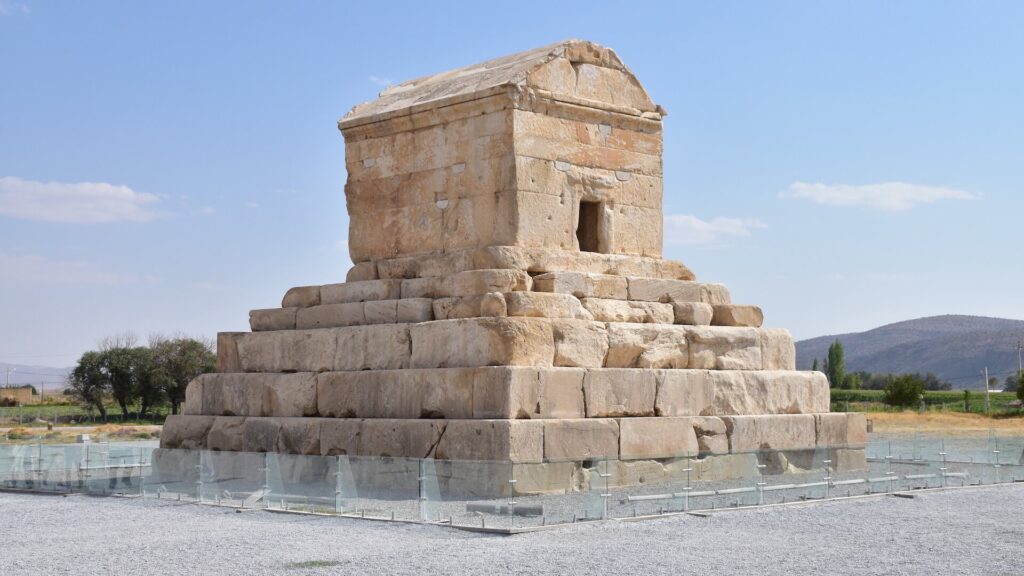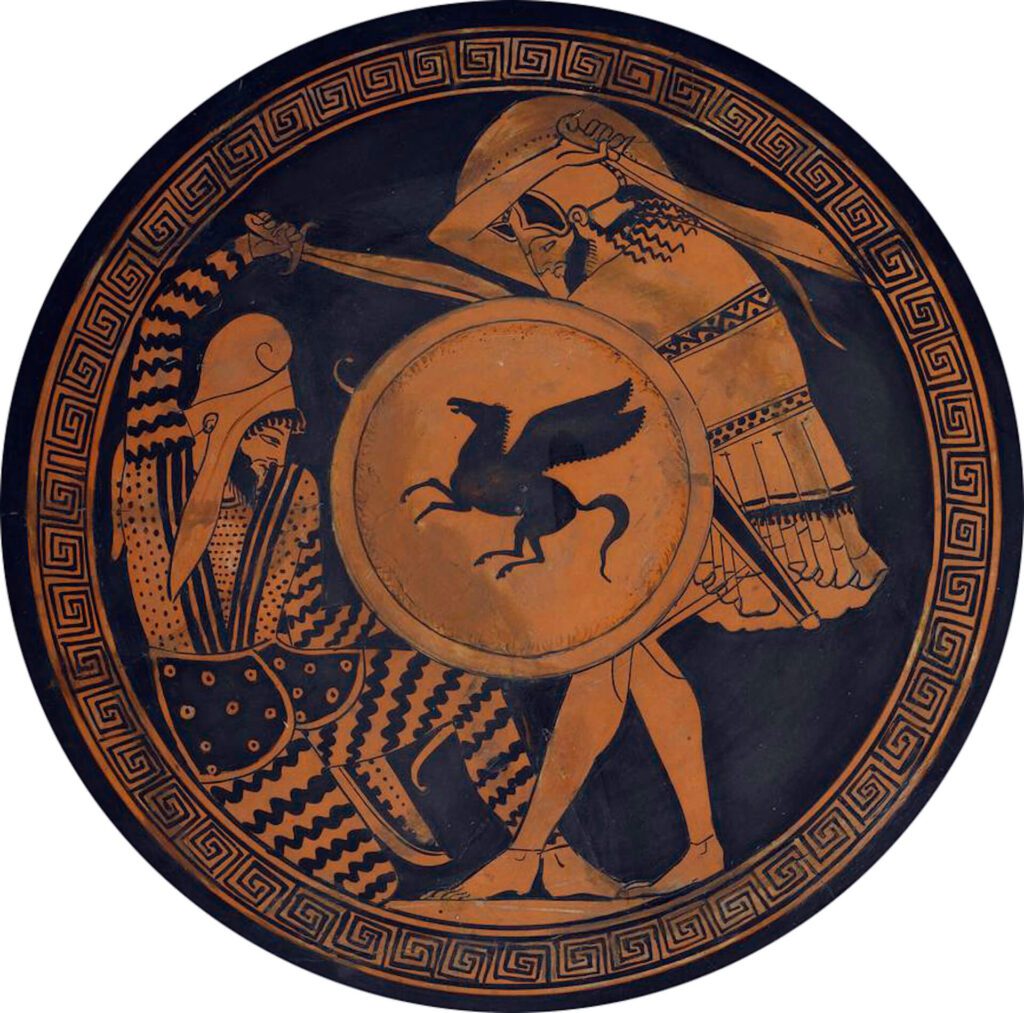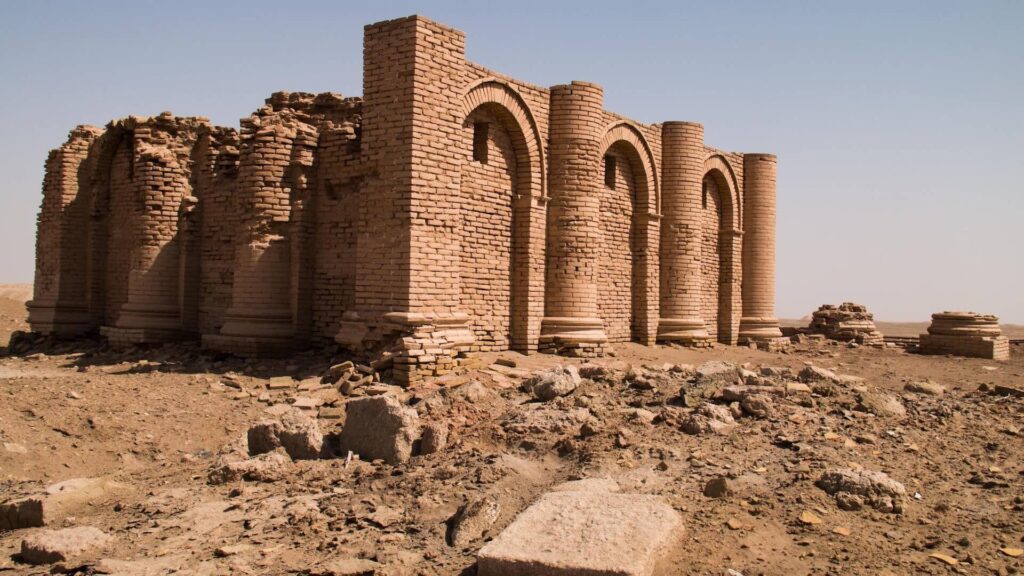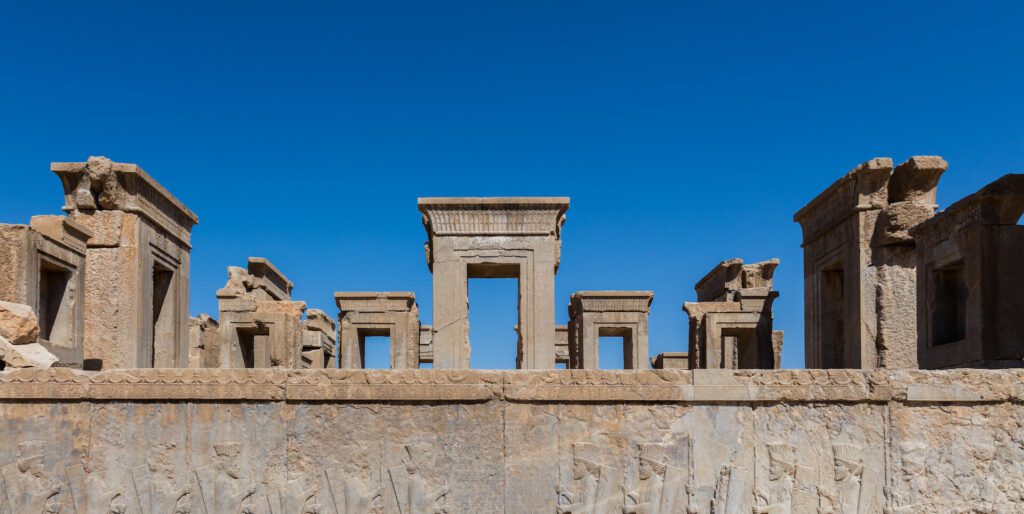The story of Iran, known to the Western world for centuries as Persia, encompasses an enormous expanse of time; and, of course, this ancient story is still unfolding today.
The following blog addresses how Persia came to be renamed Iran, and explores a few choice aspects of the history of this most fascinating of nations.
If you would like to see Iran in the company of a leading academic in Iranian history, consider booking a place on our future Empires of Everlasting Fires Iran Tour.

The Ancient Magnificence of Persia
The inception of Persia is traced back to the 6th century BCE with the rise of the Achaemenid Empire under Cyrus the Great. This empire, distinguished by its vast territories and sophisticated administration, laid the groundwork for the Persian identity, symbolizing an era of unprecedented expansion and cultural flourishing. The Achaemenid dynasty, through figures like Darius I and Xerxes, etched Persia into the annals of history – Persia became known for its military might and artistic magnificence.
(On our Iran Tour, we will visit no fewer than twelve UNESCO World Heritage Sites.)

The Name “Persia”: A Western Conception
The term “Persia” originates from “Parsa,” the name of the region in southwestern Iran that was home to the empire’s founders. This designation, however, was primarily propagated by Greek historians and subsequently adopted by Western cultures to refer to the entire kingdom. This nomenclature came from without, it was not a name used by the peoples of these lands themselves. Simply put: Iran is the endonym for Persia; Persia is the exonym for Iran.
“Iran” and Its Ancient Roots
The name “Iran” derives from “Airyan,” a term signifying the land of the Aryans, used by the Iranian peoples themselves. This indigenous term, deeply rooted in the country’s ancient texts and Zoroastrian scriptures, reflects a self-awareness and a unified cultural identity that transcends the confines of empire and geography. “Iran,” embodying the notion of an “Aryan expanse,” offers a more authentic representation of the nation’s heritage and its people’s collective identity.
The Shift Under Reza Shah Pahlavi
The formal adoption of “Iran” in 1935 by Reza Shah Pahlavi marked a significant turning point, symbolizing a deliberate reconnection with the nation’s ancient past and a step toward modern nation-statehood. This change, far from a mere alteration of nomenclature, was a manifestation of Iran’s efforts to redefine its identity, distancing itself from colonial legacies and orientalist perspectives. Reza Shah’s decree, issued on the Persian New Year, was a declaration of cultural sovereignty, aiming to revive the glory of Iran’s imperial past while navigating the path towards modernization.
The Misconceptions of Aryan Identity
The 19th-century European linguistic theories that misconceived the Aryan identity played a crucial role in shaping Western perceptions of Iran. The erroneous belief that the term “Aryan” referred to a racial group originating in northern Europe had profound implications, culminating in the Nazi regime’s appropriation of the concept. This misinterpretation obscured the historical and cultural significance of the term within the Iranian context, where it denoted a linguistic and cultural kinship rather than racial distinction.
Cultural and Historical Legacy
Iran’s landscape has been marked by centuries of invasions and cultural exchanges, making it one of the world’s greatest nations for archaeological sites today. From the Greco-Persian wars, through the Arab conquests, to the Mongol invasion, each epoch has added layers to Iran’s story, diversifying its cultural fabric ever further. The nation’s archaeological sites, ancient monuments, and artistic achievements stand as enduring symbols of Iran’s ability to assimilate, adapt, and endure.

Empires of Everlasting Fires – Visit Iran with Far Horizons
Journey through time with Far Horizons on our 17-day Empires of Everlasting Fires Iran Tour, where history unfolds at every turn. Since 2000, our expert-guided tours have offered unparalleled insights into Iran’s ancient history and vibrant contemporary cultural landscape.
From the awe-inspiring cliffs of Bisotun, etched with Darius the Great’s ancient proclamations, to the enchanting beauty of Isfahan’s Jameh Mosque and Maidan Emam, every destination reveals a chapter in the nation’s epic story.
Our itinerary is carefully designed to include twelve UNESCO World Heritage Sites, including the legendary ruins of Persepolis, the Achaemenid capital at Pasargadae, and the architectural marvels of Shushtar’s ancient Hydraulic System.

Experience the timeless allure of Persian Gardens, the technological ingenuity of the Persian Qanat, and the spiritual resonance of the Biblical city of Susa. Our deep connection with Iran and its people ensures a journey filled with meaningful interactions and discoveries, from the ziggurat of Chogha Zanbil to the glittering walls of Tehran’s Golestan Palace.
Join us to explore the Empires of Everlasting Fires, where the legacy of ancient civilizations and the artistry of Iranian culture — from exquisite carpets to the detailed Ghalamzani — will undoubtedly leave you with memories to last a lifetime.
Not quite decided on where you want to travel on your next adventure? Browse our full calendar of International Archaeological Tours.
If you have any questions at all, please do not hesitate to contact us.



